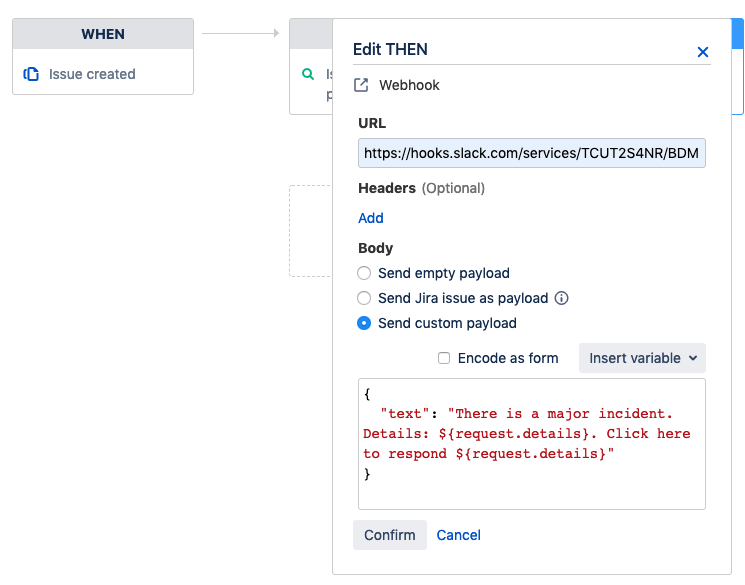Send alerts with Jira Service Management webhooks
Webhooks are ways for one application to send automated information to another. You might use a webhook to communicate something important after a particular event has occurred. For example, you can send an SMS to a team lead when a high priority issue is created.
A webhook is made up of two things:
- payload – the message itself
- URL – the destination of the message. This URL needs to be allowlisted in Jira.
By default, we will send payloads in JSON format using an HTTP POST request.
Add a webhook to a Jira Service Management automation rule
A Jira Service Management webhook is a THEN action in an automation rule. When you configure a rule you can specify WHENs and IFs, then use the webhook to define your action.
Before you begin:
- The destination URL needs to be allowlisted in Jira.
To add a webhook to a Jira Service Management automation rule:
- Go to Project settings > Automation.
- Create a Custom rule or edit an existing rule.
- Configure the WHEN and IF settings as you like.
- Add a THEN action and choose Webhook from the dropdown.
- Configure the webhook settings, name your rule, then hit Save.
See the example below of an automation rule that posts a message to Slack when a major incident occurs:
Read the developer tutorial for detailed information on how to configure Jira Service Management webhooks.
Payload body options
You can choose one of the following three options for the payload's request body:
- Send empty payload - you might choose this option if you're communicating with an app that requires no information.
- Send Jira issue as payload - the Jira issue, user, and any comments will be sent.
- Send custom payload - you can choose the variables to include and customize your payload – you'll need to specify your payload in JSON format. Check the Encode as form box if you want the payload to be URL-encoded.

